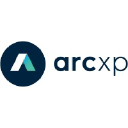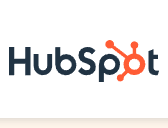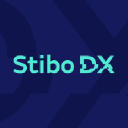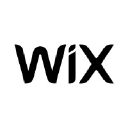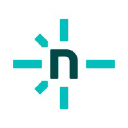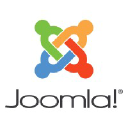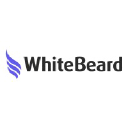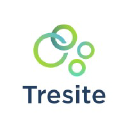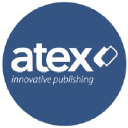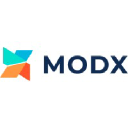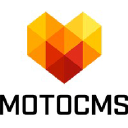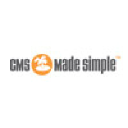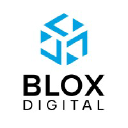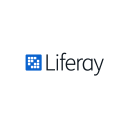
Liferay
Liferay: Digital Experience Software
Liferay provides a platform to help companies create, manage, and optimize their digital experiences. Their offerings include:
- Liferay DXP: Digital Experience Platform for building web, mobile, and other digital solutions
- Liferay Commerce: Digital commerce platform built on Liferay DXP
- Liferay Analytics Cloud: Analytics solution for understanding customer behavior and improving digital experiences
- Liferay DXP Cloud: Enterprise PaaS offering of Liferay DXP
Key Features and Benefits
| Feature | Benefit |
|---|---|
| Personalization | Deliver personalized content and experiences to customers |
| Content Management | Easily create, manage, and publish digital content |
| Integration | Connect with existing systems and data sources |
| Security | Protect sensitive data and comply with regulations |
| Flexibility | Customize and extend the platform to meet unique needs |
Industry Solutions
Liferay provides solutions tailored to specific industries, including:- Manufacturing
- Financial Services
- Healthcare
- Government
- Insurance
Resources and Support
Liferay offers various resources and support options for customers:- Documentation and guides
- Community forums
- Training and certification programs
- Consulting services
- Customer success management
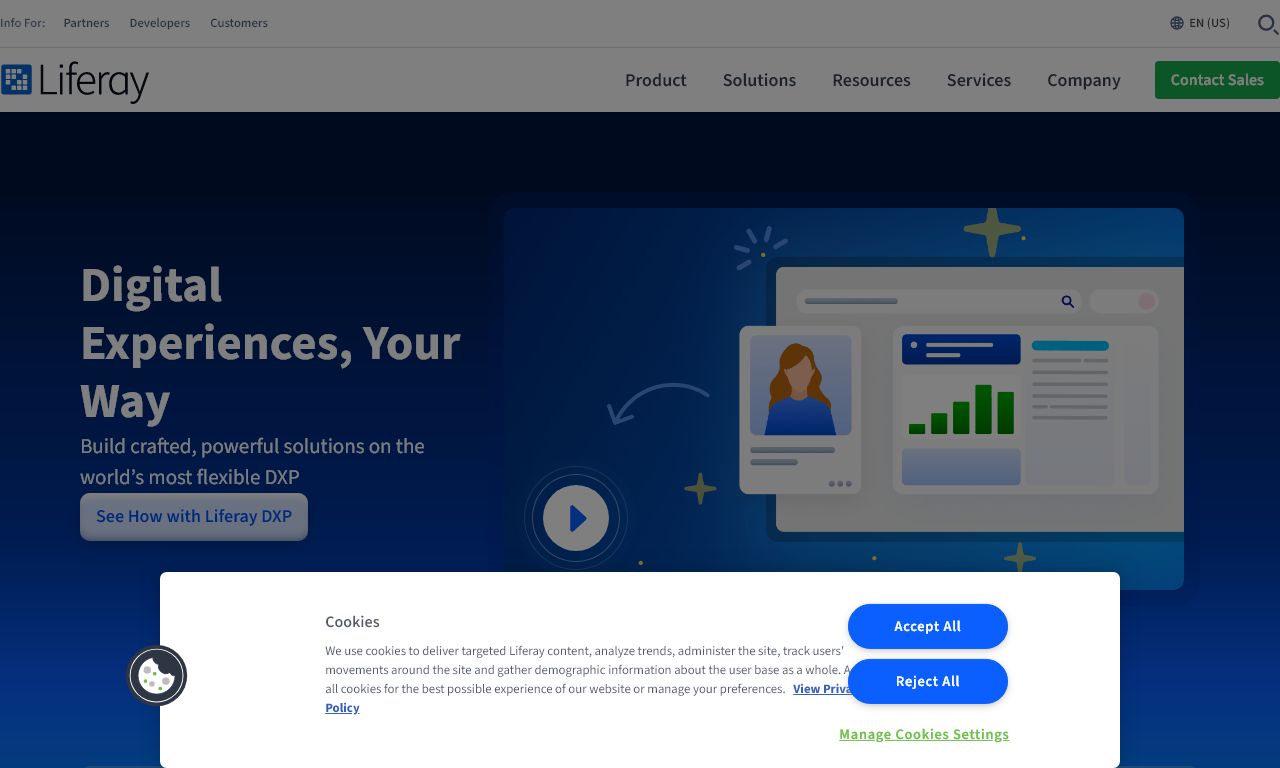
Liferay
Liferay DXP is a robust digital experience platform that offers content management capabilities alongside a suite of tools for creating personalized digital experiences. This review examines Liferay's features and functionalities as a content management system, exploring its strengths and potential areas for improvement.
1. Overview and purpose of the CMS
Liferay DXP is an enterprise-grade, open-source content management system designed to create and manage digital experiences across various channels.
It offers a comprehensive set of tools for content creation, personalization, and digital transformation.
Liferay caters to businesses of all sizes, from small organizations to large enterprises, with a focus on delivering seamless, personalized user experiences.
2. User interface and ease of use
Liferay's user interface is designed to be intuitive and user-friendly, with a modern, drag-and-drop page builder for easy content creation.
The admin panel provides a centralized location for managing all aspects of the platform, including content, users, and site settings.
However, some users may find the interface overwhelming due to the extensive features and options available.
3. Content creation and editing tools
Liferay offers a WYSIWYG editor for content creation, allowing users to easily format text, add images, and embed multimedia content.
The platform supports various content types, including:
- Web content
- Documents
- Images
- Blogs
- Wikis
Content creators can leverage structured content templates to maintain consistency across the site.
4. Asset management capabilities
Liferay's Digital Asset Management (DAM) system provides a centralized repository for storing, organizing, and managing digital assets.
Users can easily search, tag, and categorize assets for efficient retrieval and reuse across the platform.
The system supports version control and metadata management for improved asset tracking and governance.
5. Customization and extensibility options
As an open-source platform, Liferay offers extensive customization and extensibility options through its modular architecture.
Developers can create custom modules, themes, and plugins using Java, JavaScript, and other web technologies.
The Liferay Marketplace provides a wide range of pre-built apps and integrations to extend the platform's functionality.
6. SEO features and optimization tools
Liferay includes built-in SEO features such as:
- Customizable URLs
- Meta tag management
- XML sitemaps
- Robots.txt configuration
The platform automatically generates SEO-friendly URLs and allows for manual optimization of page titles and meta descriptions.
Integration with Google Analytics is available for tracking and analyzing site performance.
7. Security measures and user management
Liferay employs robust security measures, including role-based access control, SSO integration, and data encryption.
The platform supports various authentication methods and provides tools for managing user roles and permissions.
Regular security updates and patches are released to address potential vulnerabilities and ensure platform security.
8. Performance and scalability
Liferay DXP is designed to handle high-traffic websites and complex digital experiences, with support for clustering and load balancing.
The platform offers caching mechanisms and performance optimization tools to ensure fast page load times and responsive user experiences.
According to Liferay, the platform can support millions of users and handle thousands of concurrent sessions.
9. Integration with third-party tools and services
Liferay provides numerous integration options with popular third-party tools and services, including CRM systems, marketing automation platforms, and analytics tools.
The platform offers APIs and connectors for seamless integration with external systems and data sources.
Pre-built integrations are available for popular services like Salesforce, SAP, and Microsoft Office 365.
10. Pricing and support options
Liferay DXP is available in both open-source (Community Edition) and commercial (Enterprise Edition) versions.
The Enterprise Edition offers additional features, support, and services, with pricing based on factors such as deployment type and user count.
Support options include:
- 24/7 technical support24/7 technical support
- Training and certification programs
- Consulting services
- Access to Liferay's customer portal
Detailed pricing information is available through consultation with Liferay's sales team.
11. Conclusion
Liferay DXP offers a comprehensive and powerful content management solution with robust features for creating personalized digital experiences. While its extensive capabilities may present a learning curve for some users, the platform's flexibility, scalability, and integration options make it a strong contender for businesses seeking an enterprise-grade CMS.
Liferay DXP is a robust digital experience platform that offers content management capabilities alongside a suite of tools for creating personalized digital experiences. This review examines Liferay's features and functionalities as a content management system, exploring its strengths and potential areas for improvement.
1. Overview and purpose of the CMS
Liferay DXP is an enterprise-grade, open-source content management system designed to create and manage digital experiences across various channels.
It offers a comprehensive set of tools for content creation, personalization, and digital transformation.
Liferay caters to businesses of all sizes, from small organizations to large enterprises, with a focus on delivering seamless, personalized user experiences.
2. User interface and ease of use
Liferay's user interface is designed to be intuitive and user-friendly, with a modern, drag-and-drop page builder for easy content creation.
The admin panel provides a centralized location for managing all aspects of the platform, including content, users, and site settings.
However, some users may find the interface overwhelming due to the extensive features and options available.
3. Content creation and editing tools
Liferay offers a WYSIWYG editor for content creation, allowing users to easily format text, add images, and embed multimedia content.
The platform supports various content types, including:
- Web content
- Documents
- Images
- Blogs
- Wikis
Content creators can leverage structured content templates to maintain consistency across the site.
4. Asset management capabilities
Liferay's Digital Asset Management (DAM) system provides a centralized repository for storing, organizing, and managing digital assets.
Users can easily search, tag, and categorize assets for efficient retrieval and reuse across the platform.
The system supports version control and metadata management for improved asset tracking and governance.
5. Customization and extensibility options
As an open-source platform, Liferay offers extensive customization and extensibility options through its modular architecture.
Developers can create custom modules, themes, and plugins using Java, JavaScript, and other web technologies.
The Liferay Marketplace provides a wide range of pre-built apps and integrations to extend the platform's functionality.
6. SEO features and optimization tools
Liferay includes built-in SEO features such as:
- Customizable URLs
- Meta tag management
- XML sitemaps
- Robots.txt configuration
The platform automatically generates SEO-friendly URLs and allows for manual optimization of page titles and meta descriptions.
Integration with Google Analytics is available for tracking and analyzing site performance.
7. Security measures and user management
Liferay employs robust security measures, including role-based access control, SSO integration, and data encryption.
The platform supports various authentication methods and provides tools for managing user roles and permissions.
Regular security updates and patches are released to address potential vulnerabilities and ensure platform security.
8. Performance and scalability
Liferay DXP is designed to handle high-traffic websites and complex digital experiences, with support for clustering and load balancing.
The platform offers caching mechanisms and performance optimization tools to ensure fast page load times and responsive user experiences.
According to Liferay, the platform can support millions of users and handle thousands of concurrent sessions.
9. Integration with third-party tools and services
Liferay provides numerous integration options with popular third-party tools and services, including CRM systems, marketing automation platforms, and analytics tools.
The platform offers APIs and connectors for seamless integration with external systems and data sources.
Pre-built integrations are available for popular services like Salesforce, SAP, and Microsoft Office 365.
10. Pricing and support options
Liferay DXP is available in both open-source (Community Edition) and commercial (Enterprise Edition) versions.
The Enterprise Edition offers additional features, support, and services, with pricing based on factors such as deployment type and user count.
Support options include:
- 24/7 technical support24/7 technical support
- Training and certification programs
- Consulting services
- Access to Liferay's customer portal
Detailed pricing information is available through consultation with Liferay's sales team.
11. Conclusion
Liferay DXP offers a comprehensive and powerful content management solution with robust features for creating personalized digital experiences. While its extensive capabilities may present a learning curve for some users, the platform's flexibility, scalability, and integration options make it a strong contender for businesses seeking an enterprise-grade CMS.
In conclusion, Liferay DXP provides a comprehensive set of migration tools and services to ensure a smooth transition for organizations moving from other CMS platforms to Liferay.
Website:




